Best bikes for indoor cycling: Dedicated trainer bike options
A bike dedicated to indoor riding will save set-up time and avoid wear on your outdoor bicycles
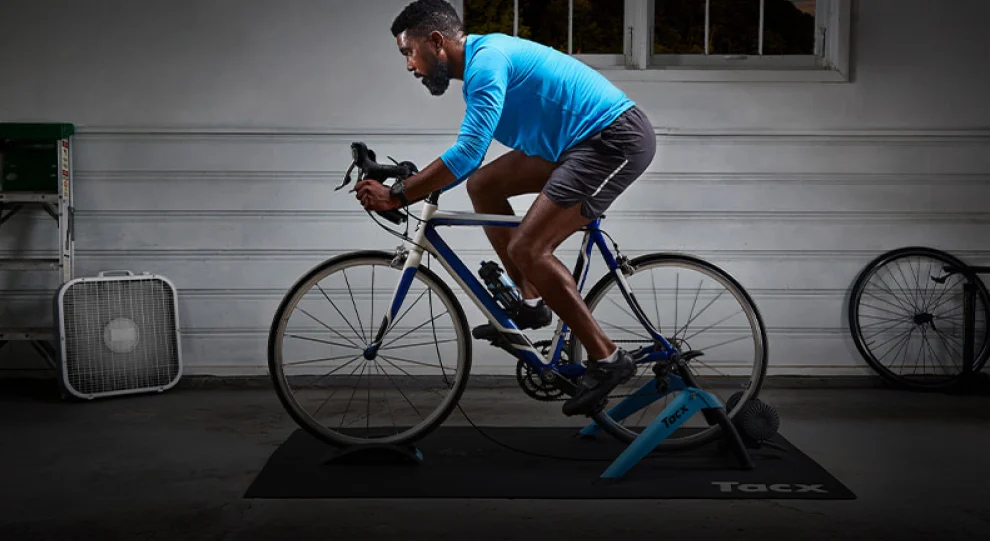
The best bikes for indoor cycling will provide an option to leave your set-up ready to go, so you're not going to need to spend time preparing for a turbo session.
The best indoor cycling apps can be addictive and if you're spending a lot of time riding indoors, you may want a dedicated set-up, which allows you to leave your bike on your turbo trainer and ready to ride.
Indoor cycling can be almost as hard on your bike as riding outdoors in poor conditions. You'll sweat onto the frame, components and drivetrain, so corrosion can be an issue, A lower-priced bike that you can set up with a position similar to your best bike may be a good option to keep costs down.
In any event, even a more extravagant indoor set-up will probably be less expensive than the best exercise bikes. It will also give you some versatility to use your turbo bike outside if you don't want to use your best bike in poor conditions.
We've rounded up the best bikes for indoor cycling below, depending on the type of rider you are. A casual rider will probably be looking for a comfortable ride position, while a racer may want to replicate their race position. That's even more true of triathletes, who need to be able to ride efficiently on their aerobars. A mountain biker will want a different set-up again.
So we've split this guide by the type of riding you may be doing and made a few suggestions for each. Further down the page, we've got a guide to what to consider when looking for the best bike for indoor cycling for your needs.
Best bikes for indoor cycling
Best bikes for indoor cycling for the casual rider
If you're just looking for a bike for indoor cycling to hook up to your trainer for shorter, lower-intensity riding, you're probably not going to want to spend too much. You're also more likely to want to adopt a more comfortable, more upright ride position, particularly since aerodynamics isn't an issue, as it is when riding outdoors.
Many of the best budget bikes are designed for an endurance ride position, so you'll not be too stretched out and the bars will be higher, resulting in you sitting more on your saddle with less weight on your arms. You may even prefer a hybrid bike with flat bars to a dropped handlebar road bike.
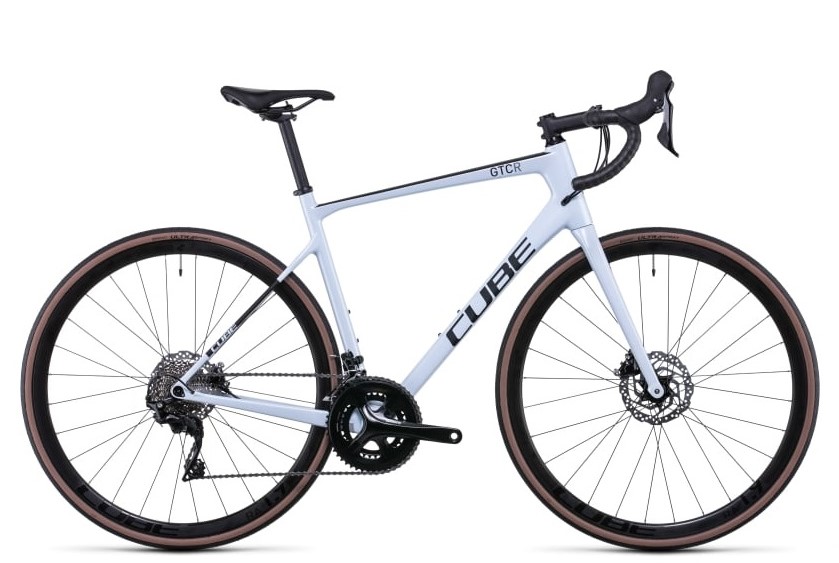
Upright geometry to keep you comfortable on a long Zwift ride
Cube's Attain road bike has a full Shimano Tiagra groupset with 50/34T chainrings at the front and an 11-34T cassette. The frame is based around Cube's Road Comfort geometry, meaning as you slog through a long structured workout, the relaxed position will temper some of the non-aerobic discomfort.
With the bike being a disc-equipped roadie, the rear hub spacing is 12x142mm, so when you mate it with your direct-drive smart trainer, make sure you have the right adaptors. Most direct drive trainers come with these so you should be ok, but it's worth checking the specs before you buy.
If you're running a wheel-on trainer, you will also need to get a trainer axle like the Kinetic Traxle, Tacx E-Thru-Axle or Robert Axle Project trainer axle, so that the rear axle will fit in the trainer.
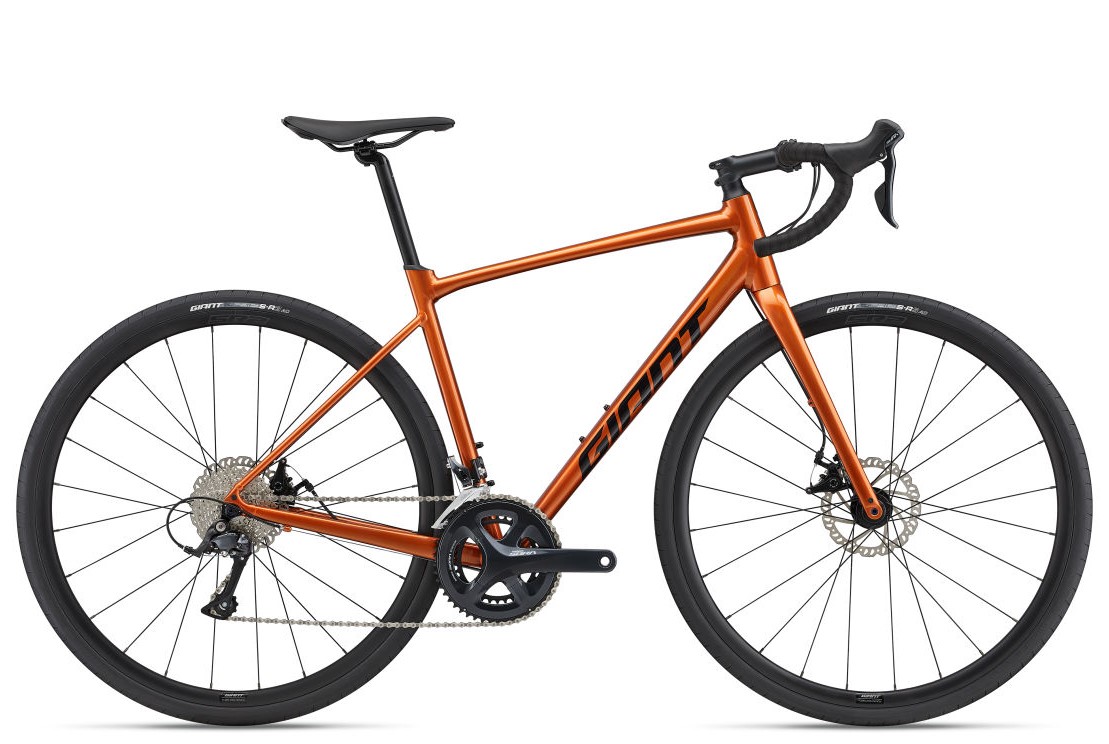
High-quality frame with a comfortable geometry and 2x8 gearing
The Giant Contend is the brand's entry-level road offering. The frame is made using Aluxx-Grade aluminium and sees plenty of design elements borrowed from the Defy — so don't expect it to flex under power. At the same time, the all-rounder geometry provides a comfortable position for hours of riding on the smart trainer.
The Contend 2 sees a 2x8 Shimano Claris groupset bolted on, and the chain, cassettes and chainrings won't break the bank when they do eventually wear out over time. There's a good range of sizes from XS to XL and the rim brakes and quick-release hubs should mean compatibility with a wide range of trainers.
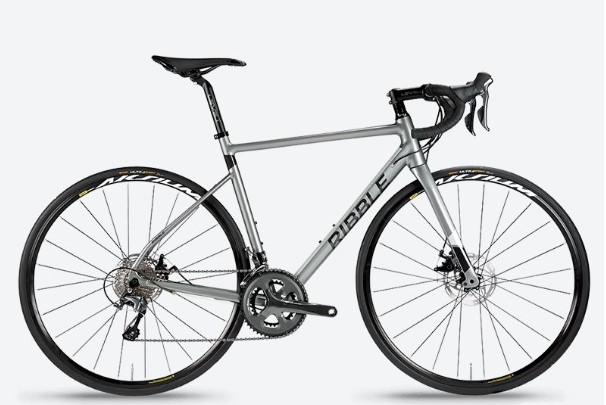
Bike Builder lets you spend money where you want to, and skimp where you don't
Direct-to-consumer brand Ribble is usually found pretty close to the top spot in 'bike of the year' roundups which says a lot about the quality the UK outfit is producing, and also the performance-to-value ratio.
What's nifty about Ribble, especially if you are looking for a bike for the indoor trainer, is you can use its bike builder to hand-pick almost every component. This allows you to prioritise drivetrain components while opting for the cheapest available components everywhere else where they won’t have a major effect on your ride.
With the swap to disc brakes, the Endurance AL now runs on thru-axles, so figure the cost of these into your set-up. The base model comes with 10-speed Shimano Tiagra, but if you want to spend a bit more, you can upgrade to 11-speed with either Shimano 105 or SRAM Rival.
Best bikes for indoor cycling for the racer
While a causal user may be happy to sit up and ride, it's likely that if you're racing you'll want to be able to adopt a more aggressive position on your trainer, so that you get used to holding this in a race and can reap the aero gains available.
If you're into Zwift racing, you'll want a race-ready set of gears as well, whereas if you're just using ERG mode, gearing isn't going to be important. You might even be able to use a single-speed bike for your workout, while a fixed gear will ensure that you can't coast, which should produce fitness benefits.
A bike that will let you mimic your race position is likely to have a lower stack than a bike for use by a more casual user. Lower-priced bikes are usually designed for a more upright, endurance ride position, so it might be difficult to mimic a more racy bike.
The other option is to fit a longer stem to a smaller frame size so that you're more stretched out. Unless you have an Elite Sterzo steering plate, you're not going to need to turn your bars as you cycle indoors, so any effect on steering geometry is irrelevant.
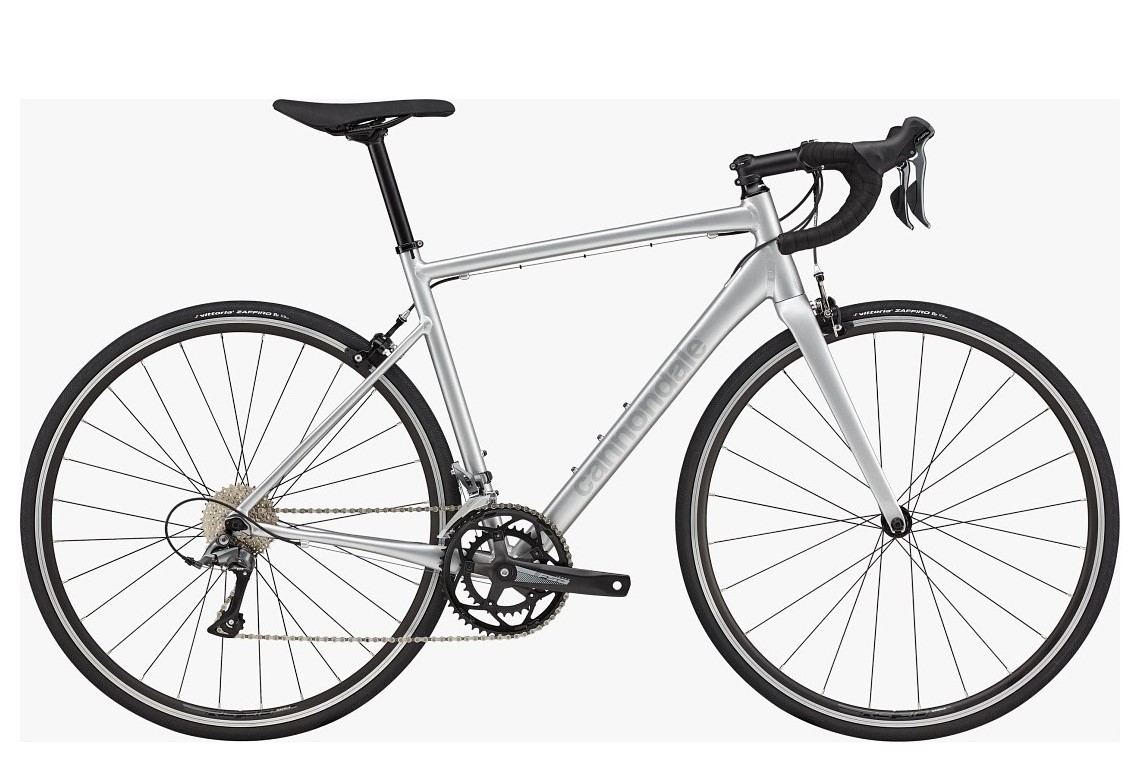
Alloy frame with deep racing roots and a price that won't bust your budget
Among the best aluminium road bikes, Cannondale's CAAD is probably one of the most universally loved and race-ready, and the Optimo borrows most of its design cues from past models from the CAAD bike series. The rim brakes and semi-external cabling aren't going to be an issue for indoor riding and help keep the price competitive.
This particular version of the CAAD Optimo comes with Shimano's Claris groupset with an 8-speed 11-30T cassette paired with an FSA Tempo 50/34 crankset.
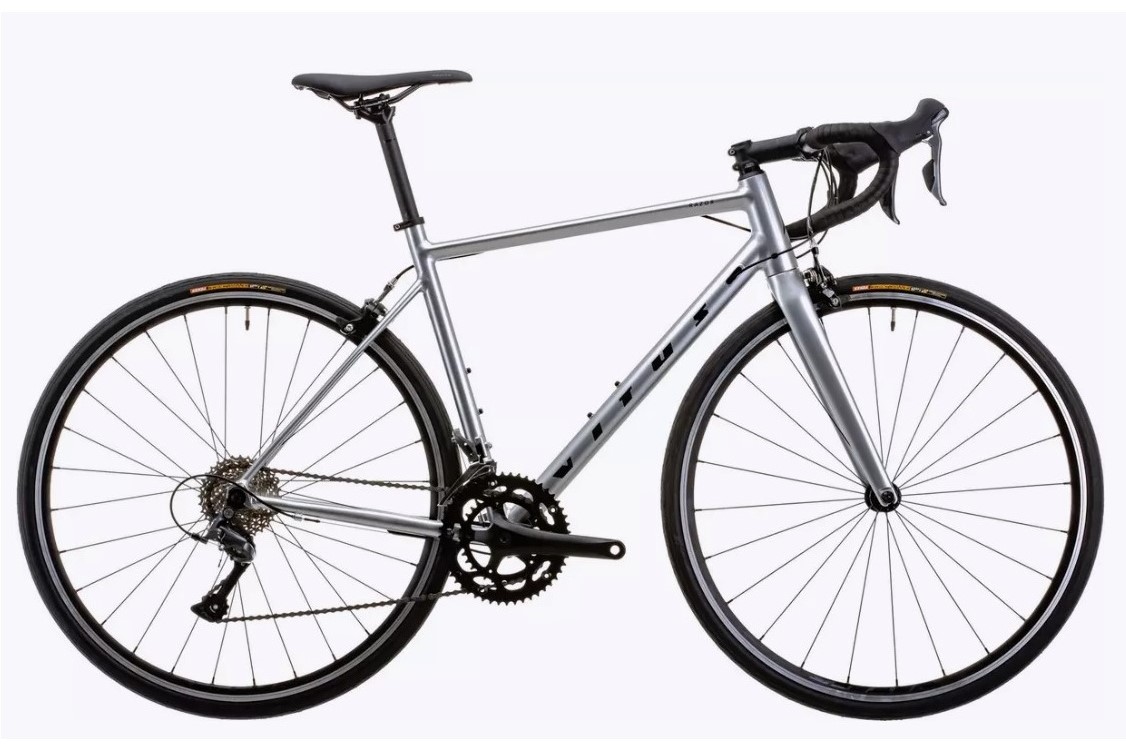
High-end alloy frameset with easy-to-service components
Coming from Vitus, the Wiggle/Chain Reaction Cycles in-house brand, the Razor is an entry-level alloy road racer. The frame is made from 6061 double-butted aluminium with a carbon fork.
At this entry-level price point, it's no surprise to see an 8-speed Claris groupset, complete with a 50/34T chainset and 11-32T rear cluster. Newer models of the Razor have switched to disc brakes, but rim brakes are fine for a bike to be ridden indoors.
The Vitus Razor and a Tacx Neo 2T as a package are still less than what the Neo Bike costs and you then have a bike that can also be ridden outdoors.
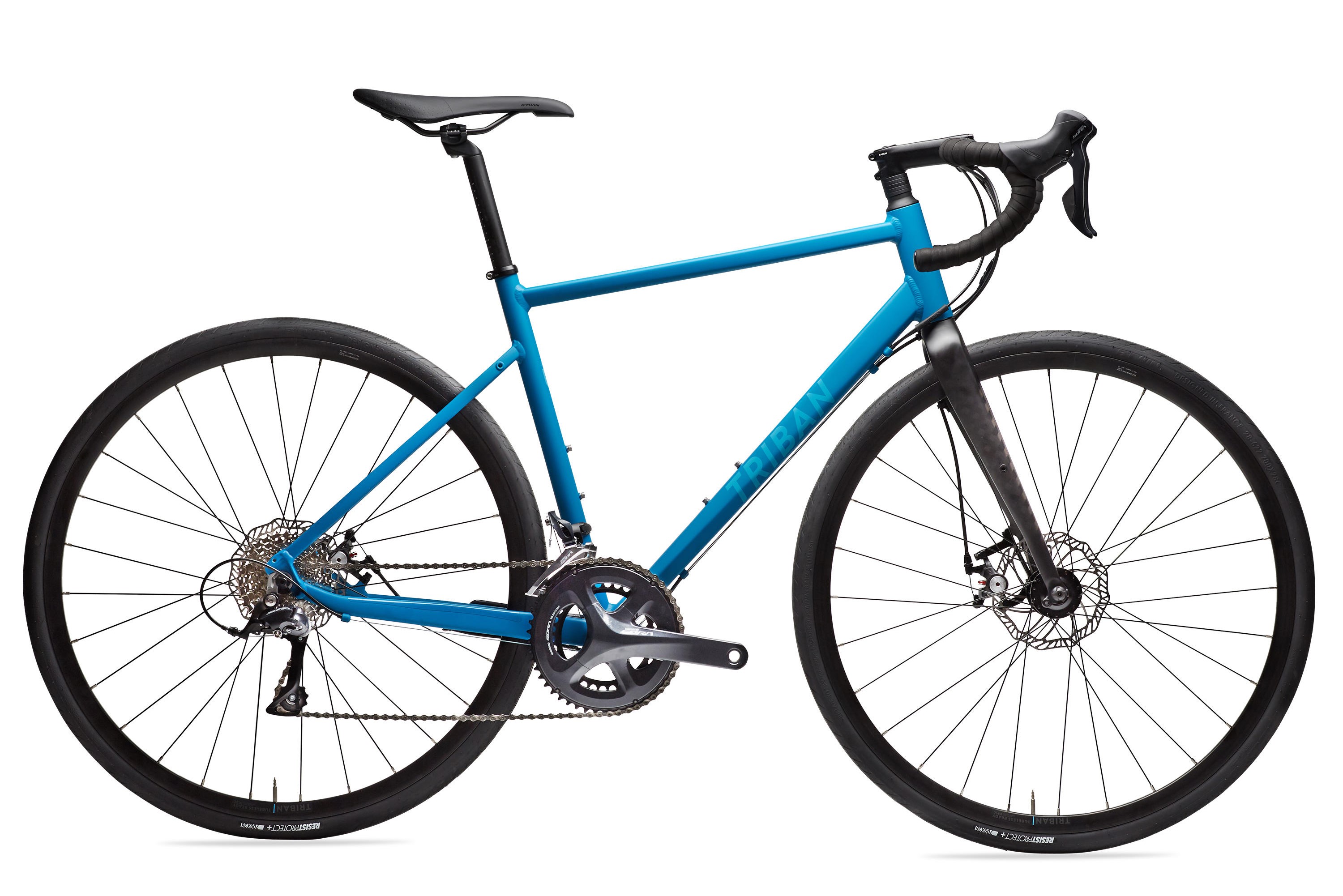
Wide gear range to tackle climb simulations
The Triban RC500, sold by Decathlon, offers a Shimano Sora 9-speed groupset and an 11-32 tooth gear range, so there's plenty of scope to tackle harder climbs on your turbo. Although the ride position is quite upright, swapping the stem and spacers will let you drop the handlebars for a racier workout.
Upgrade to the RC520 Disc and Shimano 105 is on offer, which gives you 11 speeds for more gearing versatility.
Best bikes for indoor cycling for the triathlete
For triathletes, being able to hold their race position and make power on their tri bars is vital. Indoor training is a great way to fine-tune your bar set-up and test it thoroughly before your race.
That makes a lower-priced tri bike a good option to hook up to your trainer and there are a few options available. The alternative, if your position isn't too aggressive, is that you might be able to add some clip-on aero bars to a road bike.
Whether that would work will be highly dependent on the geometry you need to adopt. Does a road bike let you get your bars low enough? Can you get your saddle position far enough forward?
A zero setback seatpost may help you to push your saddle further forward, but the geometry may still not be right, or you may be at the limit of adjustability, so fine-tuning may not be possible.

A budget tri bike to train in your race position
Indoors is a great place to get used to holding your triathlon or time trial position. A turbo with a power meter is a good way to fine-tune it to ensure that you can push out maximum watts over your chosen distance, and it's a safe way to test a new position. Some top triathletes do the majority of their training on the turbo.
Another opportunity to use Ribble's Bike Builder is to select a budget spec, The Ultra Tri Disc can be kitted out with non-aero Mavic Aksium wheels and Shimano 105 groupset to keep the price down. You can choose between four crank lengths and three cassette options at no extra cost.
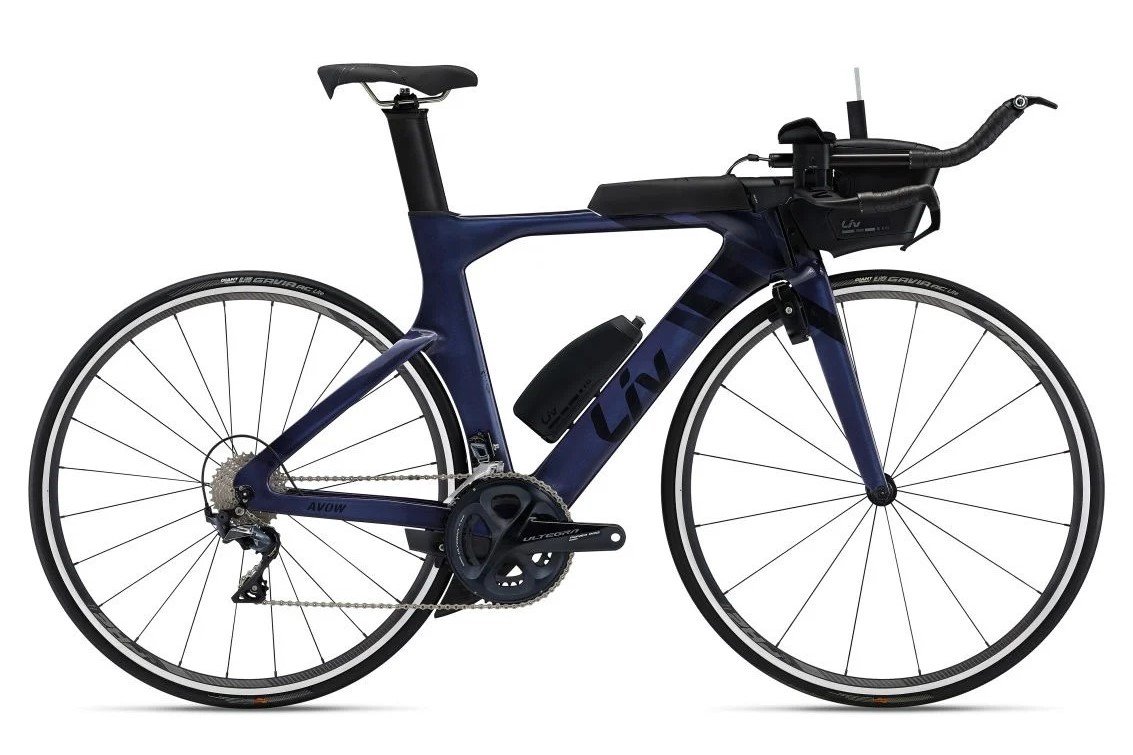
Fully fledged women's tri-bike
The Liv Avow Advanced provides a lot of adjustability, so you can experiment with your race position on your turbo. The rim brakes and external cables may be old school, but indoors that's not going to matter and there's the frame stiffness to handle your toughest sessions.
As with the brakes and cables, the shallow stock wheels aren't going to cut the mustard in a race, but they're robust and fine for the indoor rider, particularly since you're probably not going to be using the rear on your smart trainer.
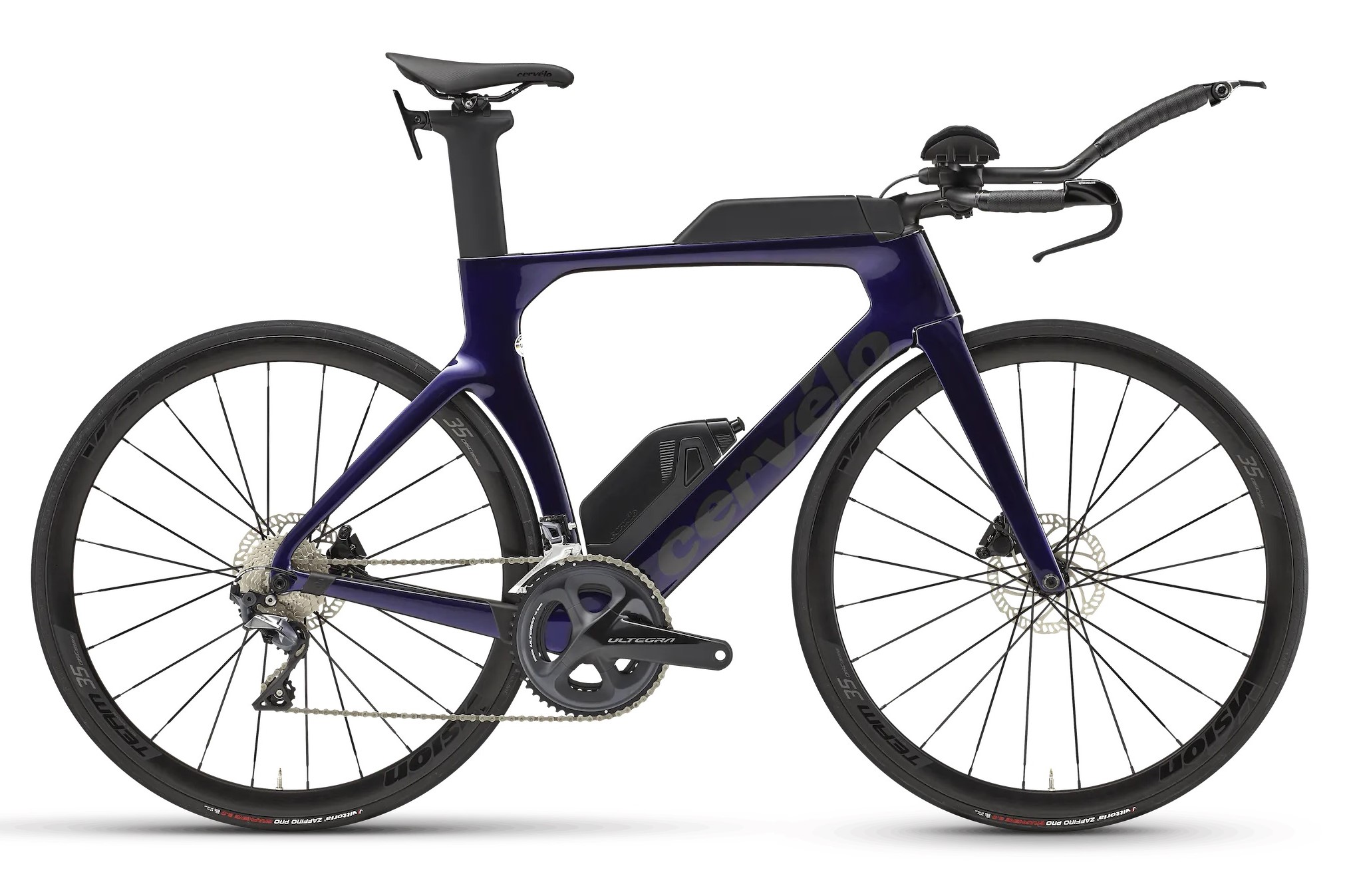
A lower priced Cervelo option
The Cervelo P Series tri bikes offer a reasonably affordable option for the indoor triathlete. The current range starts off with a Shimano 105 build with Zipp Vuka basebars and extensions, shallow section Alexrims wheels and TRP Spyre mechanical disc brakes.
It may not be the spec you'd choose for a race, but for training it's a set-up that gives plenty of adjustability without breaking the bank.
Best bikes for indoor cycling for the mountain biker
If you're riding a mountain bike, whether casually or in competition, and want to stay fit by working out indoors, you'll probably not want to be bent over a set of road bike drop bars. So it makes sense to hook up a mountain bike to your indoor trainer.
There are advantages to buying a cheaper mountain bike, as pretty much every trainer comes native with quick-release compatibility and many cheap mountain bikes still use this standard, so you'll avoid any problems with axle compatibility.
Tyre size may still be an issue though, so if you're riding a wheel-on trainer check that there's space for your tyre width and compatibility with your wheel size. With a direct drive trainer, this is less likely to be a problem.
It's also worth considering buying a mountain bike with a rigid fork. Without any obstacles to ride over, a suspension fork will either bob like crazy or you'll have to lock it out, which makes it redundant.
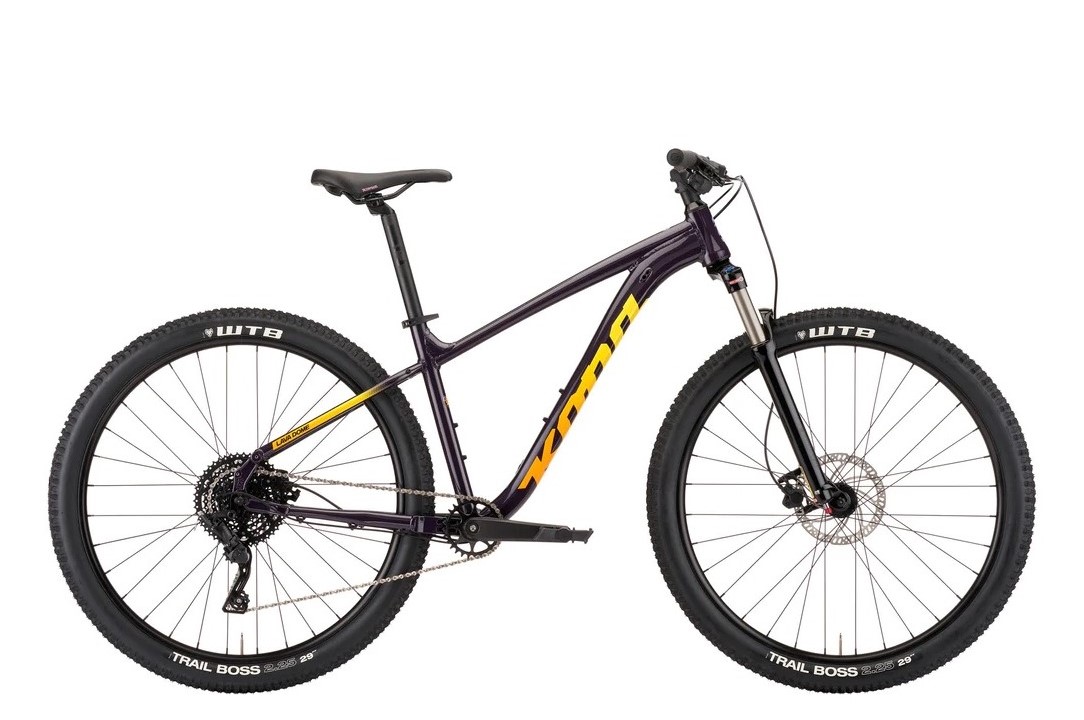
The gear range to practise steeper climbs
If you want to keep up your mountain bike fitness indoors, there is a good range of budget MTBs available.
The Lava Dome 29er has a 1x9-speed set-up though, with an 11-46T cassette and a 28T chainring, giving you the option to train for steep climbs on your turbo. The Lava Dome has a 135x10mm quick-release rear axle, so you should be able to slot it into most trainers.
There's an air spring Suntour fork, although there's no lock-out, so harder out-of-saddle efforts may cause bobbing.
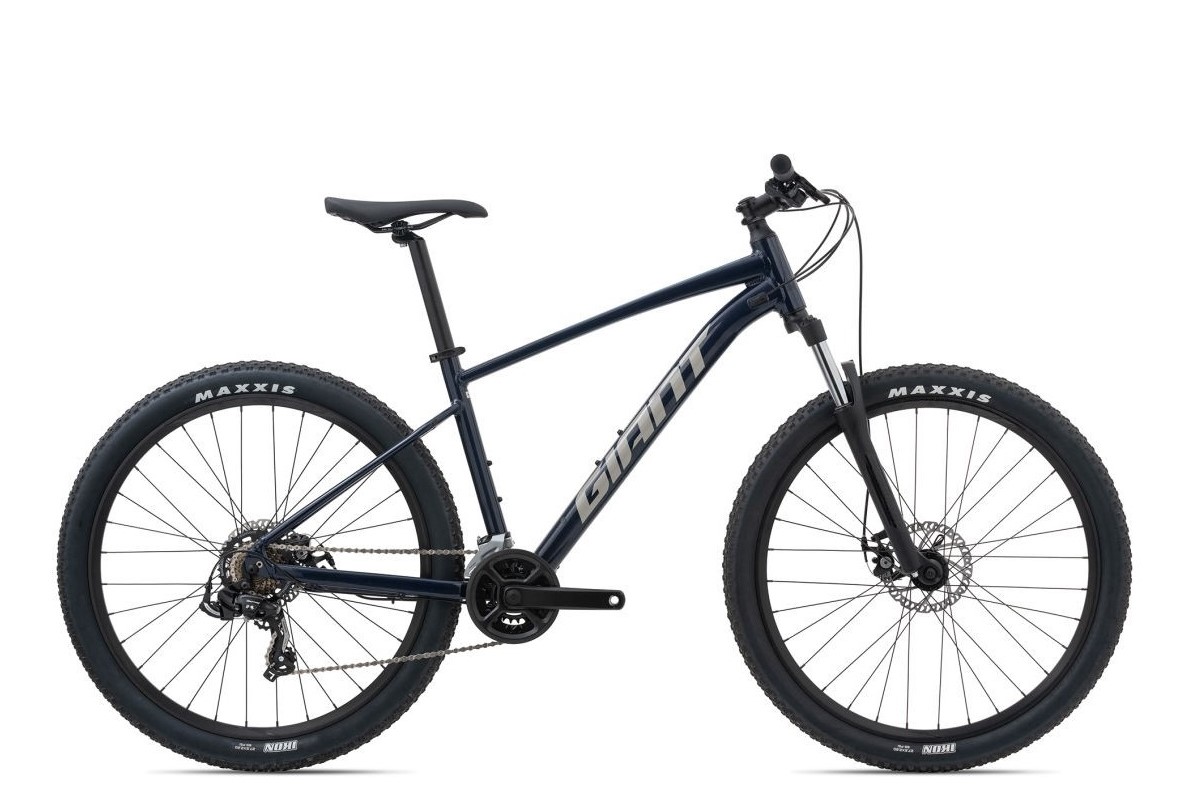
Now with a single chainring 8-speed set-up
The Giant Talon 4 is another inexpensive mountain bike option to perfect your pedalling indoors. As with the Kona, it has quick-release wheels, so trainer compatibility shouldn't be an issue. The current spec bike has a 1x 8-speed drivetrain rather than the triple shown, so you don't need to contend with a front mech when perfecting your ride strategy.
There's an SR Suntour XCE suspension fork, which again like the Kona may be subject to bobbing unless you choose to swap it out for a rigid model.
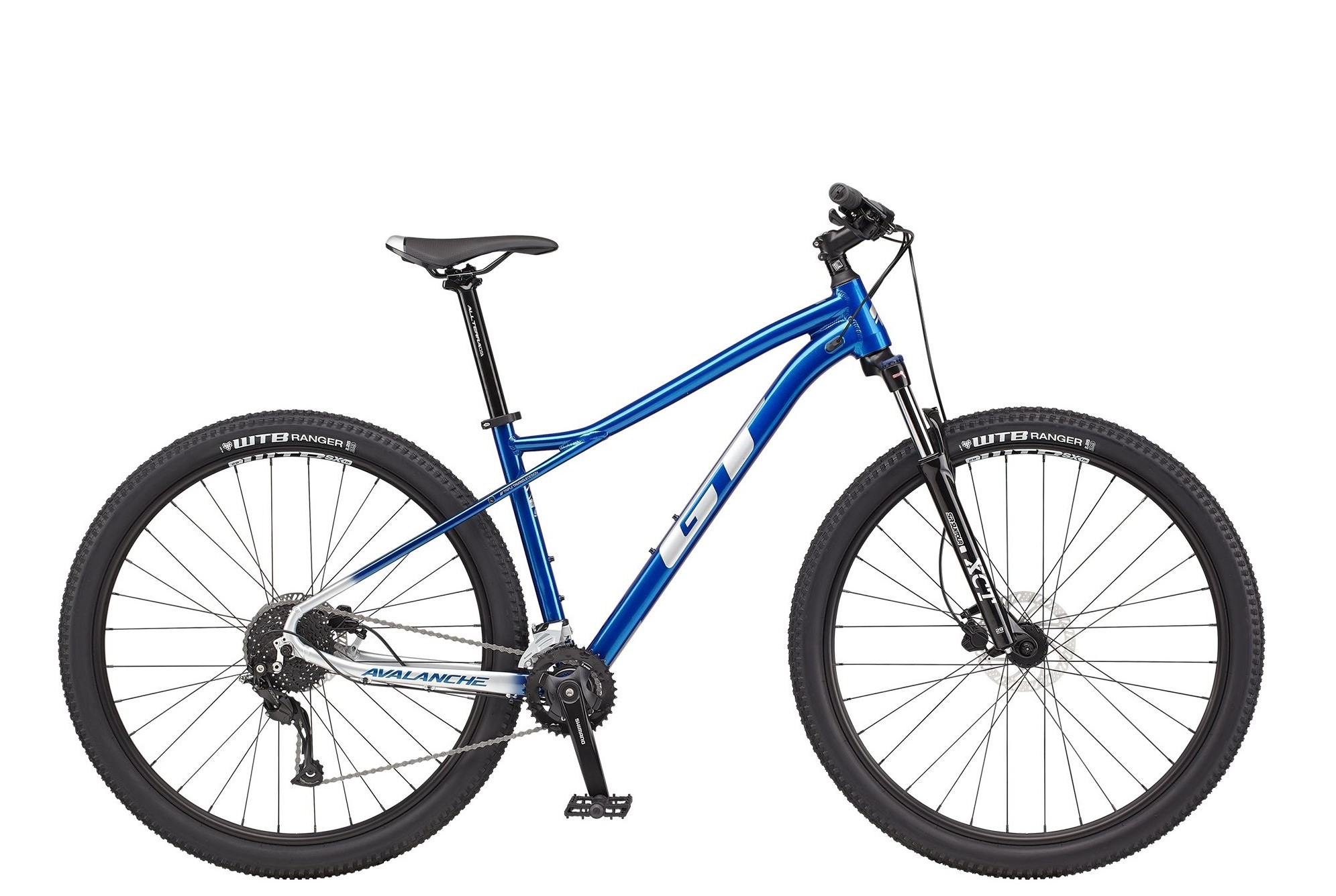
A budget option from GT
GT's Aggressor keeps the price down with a 3x7-speed groupset with a 14-34 tooth cassette with Microshift derailleurs. The SR Suntour fork has 75mm travel, so there's not too much movement available up front.
Again, there are quick release hubs, so there should be no extra hardware required to set up the bike on your turbo.
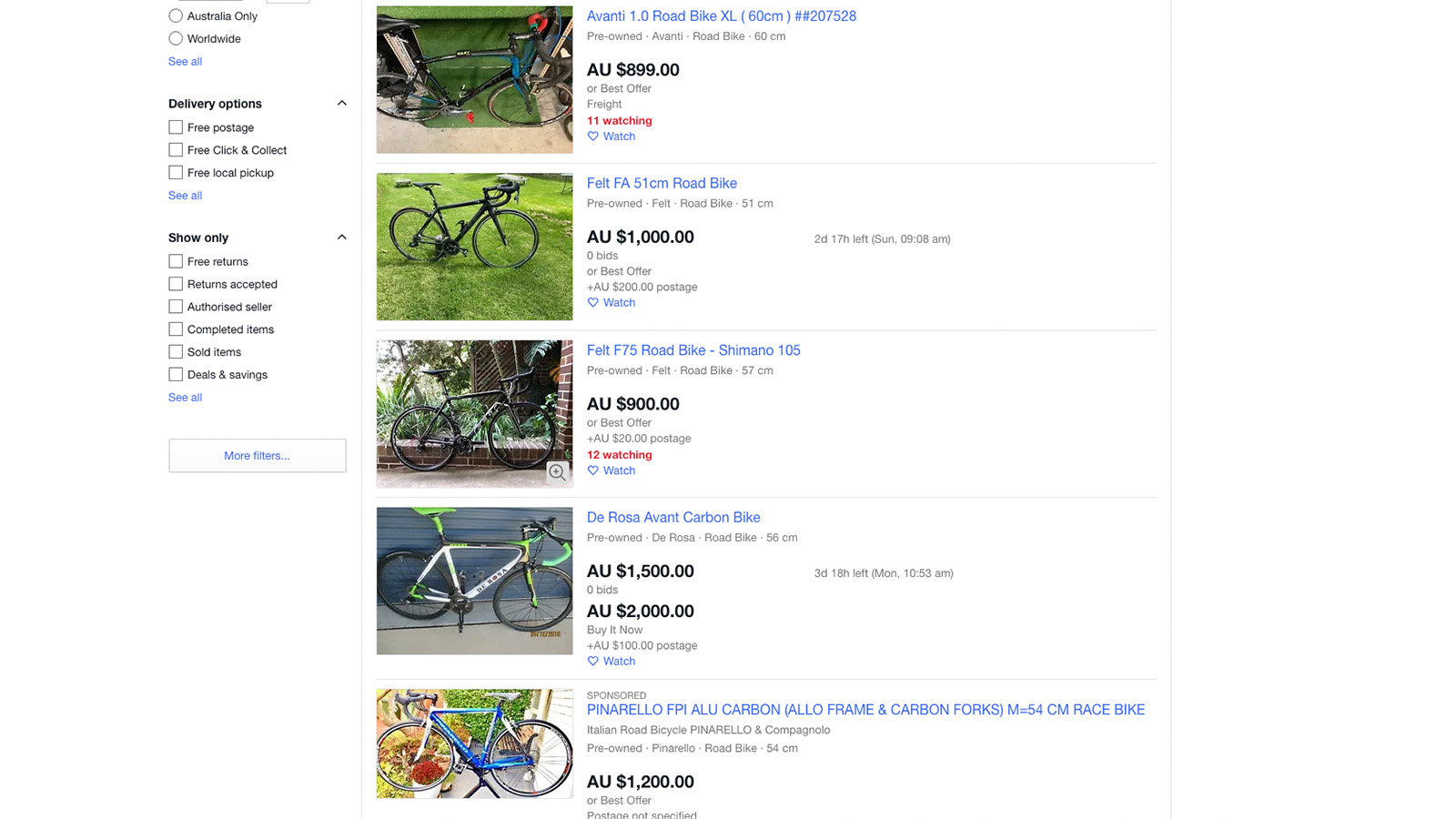
Anything second hand or your old bike
Specifications
Reasons to buy
Reasons to avoid
The other option is to look for something second-hand or to use an old frame. Buying a bike second-hand, you never really know what it has been through or if/how many times it has been crashed, so there is some degree of risk. That said, if it's only going into the trainer, equipment failure has a much lower consequence than something you'll be riding outdoors.
The advantage of using one of your old bikes is that you know it fits, you know its history and it probably already has your preferred touchpoints installed. That said, some of the parts may already be worn and this will be further exacerbated the more you ride indoors, so it may not be a zero-cost option.
How to choose the best bike for indoor cycling
Why have a separate bike to ride indoors?
We've mentioned at the top the hassle of prepping your bike to ride indoors. If you're short on time, spending an extra 5 or 10 minutes getting your outdoor bike ready to ride indoors may mean that it's not worth the effort. So having a bike that's ready to roll for a turbo session is an advantage, particularly if you're riding indoors regularly and have space to leave your bike set up between sessions.
You're going to save wear on your best bike too and you'll have a budget bike you can take for an outdoor ride in poor conditions if you want to. There are other reasons to keep your best bike for best too, as we'll explain below.
What should I look for in an indoor bike?
Most of the things that we bang on about such as weight, compliance, aerodynamics and handling characteristics don't come into play with a bike that is going to be used indoors, because you're not actually going anywhere.
With that, the most important factors are really bottom bracket stiffness and geometry that fits. If you're training for TTs or triathlons, being able to set up your aero bars to mimic your race position is an important part of training too. Likewise, a mountain bike has its own position that you may want to replicate, rather than taking to a road bike, even an endurance model.
Obviously, the drivetrain is important as well, and this will weigh heavily on the price, based on how many gears you want at the back. If you're only going to be riding in ERG mode, you don't really ever need to shift so you don't need 12 cogs at the back, but if you're competing in Zwift rides and races, or want to mirror your outdoor bike set-up and ratios you may want to opt for more gears.
Will using my bike on a turbo trainer damage the frame?
When you're chasing attacks on Zwift or pushing through a VO2 max interval, there is a lot of force going through the frame. When you're out on the road, the bike can move around underneath you, and some of that energy can dissipate through this movement. When riding indoors, however - unless you've bought one of those Saris MP1 Infinity trainer platforms, have the latest generation Wahoo Kickr or built a DIY rocker plate - every bit of that force will be absorbed by your bike.
These forces won't break your frame, but they will introduce additional fatigue over time, not only to the tubing but also to bearing systems like bottom brackets.
We've all heard horror stories of brands voiding the warranty on a frame due to indoor use, but the likelihood of damaging your frame in the indoor trainer is pretty low. We've been riding carbon frames with all types of turbo trainers for years and never had an issue. If you are unsure though or want to double-check, get in touch with your trainer manufacturer and ask them about your specific frame.
Will sweating more corrode my bike?
While we've never seen a frame break that has been properly installed into a trainer, we have seen handlebars snap due to salt corrosion. While most aluminium bars are anodised to stave off corrosion, scratches or imperfections can allow the nasty salty bits inside and sweat can also corrode or freeze bolts and shifter mechanisms.
You are going to get exceptionally sweaty when riding indoors and that sweat is going to drip off and make its way onto your bike, stem bolts, bearings and whatever else.
This can be avoided with a sweat net or a beach towel but there will still likely be a bit that finds its way through.
It's also worth bearing in mind that aluminium and carbon are on the opposite ends of the galvanic scale, and when you connect them with an electrolyte, like sweat, it can speed up the corrosive process. That's why almost all the bikes we've recommended here have alloy frames.
How long will my drivetrain components last?
When you're riding inside, there is no such thing as just spinning along, and the majority of your time on the trainer will be high-intensity intervals and plenty of watts. Whether using a smart trainer, a dumb trainer or even rollers, we tend to stick to only a few gears on the rear cassette, whereas if you're using ERG mode, there is no need to shift at all.
All of this can prematurely wear out drivetrain components, so it's especially important to clean and lube your drivetrain to prolong its life as much as possible. Don't fall for the trap of neglecting it because "you've only been on the trainer."
The good news is that if you've got a cheaper bike with a lower-spec drivetrain, the cassette sprockets and other components are likely to be more robust than those from a flashy groupset and the cost of replacement parts will be a lot less too; another argument to opt for a cheaper spec for a dedicated indoor training bike.
Which type of wheel axle do I need?
Regardless of what bike you're using, we cannot stress enough the importance of using a steel skewer rather than the lightweight titanium one you're using with your nice wheels for riding outside. The skewer is taking on far more force than it would outside, and needs to be more stout to prevent damage.
Additionally, lightweight skewers don't always interface well with wheel-on indoor trainers and can be damaged or even pop out. While we've never seen frames damaged because of significant efforts on the trainer, we have seen broken frames as a result of people falling out of trainers because their skewers weren't mounted correctly in the trainer itself.
With regards to the type of axle - quick-release skewer vs. thru-axle - most, if not all, turbo trainers come ready for a quick-release skewer, so if your bike has thru-axles you'll need to buy a separate adapter to make them compatible with each other.
Almost all modern disc brake bikes will use a thru-axle rather than a quick release axle. Many have standardised on a 12x142mm rear thru-axle. Particularly for mountain bikes, 12x147mm Boost spacing is a common alternative, although lower priced MTBs, including those featured above, often stick to quick releases.
The latest race content, interviews, features, reviews and expert buying guides, direct to your inbox!
Paul has been on two wheels since he was in his teens and he's spent much of the time since writing about bikes and the associated tech. He's a road cyclist at heart but his adventurous curiosity means Paul has been riding gravel since well before it was cool, adapting his cyclo-cross bike to ride all-day off-road epics and putting road kit to the ultimate test along the way. Paul has contributed to Cyclingnews' tech coverage for a few years, helping to maintain the freshness of our buying guides and deals content, as well as writing a number of our voucher code pages.